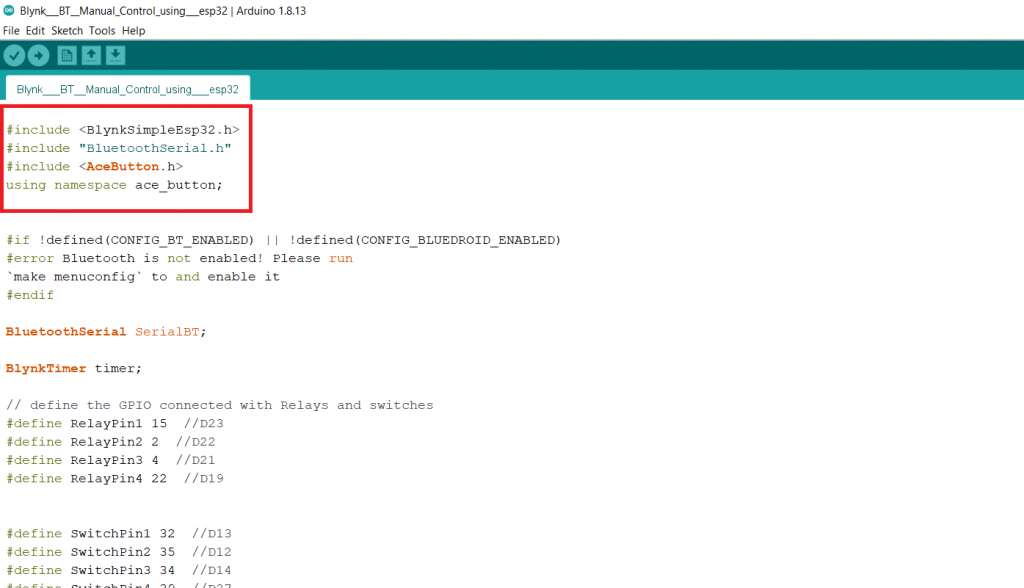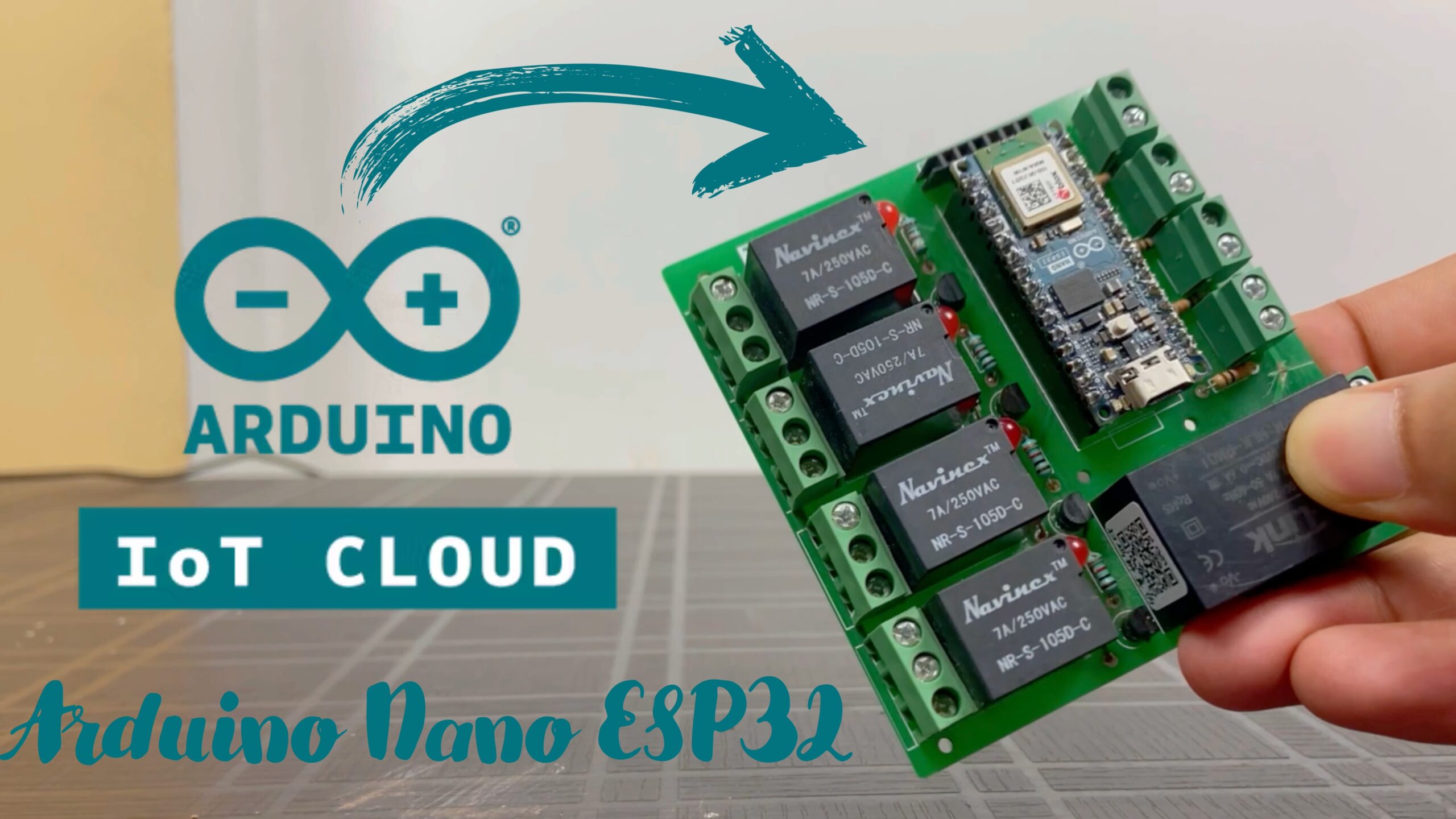In this homeautomation system we can control our homeappliances via bluetooth , wifi and from manual switches,
if the esp32 is connected with the internet the onboard leds will turn on,
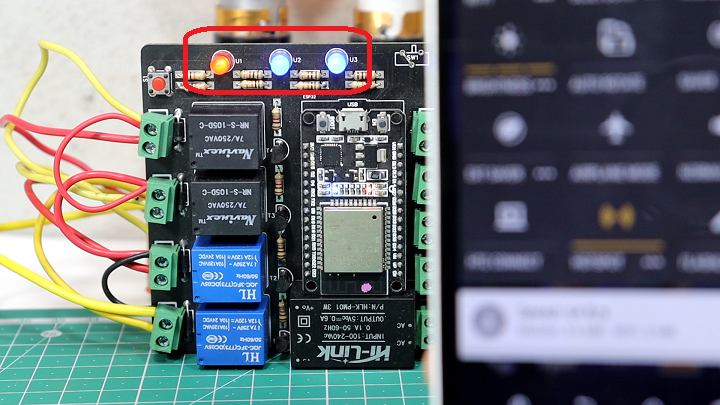
then we can control our homeappliances with the blynk mobile application, and also from the manaul switches and we can also monitor the real time status in the blynk app.
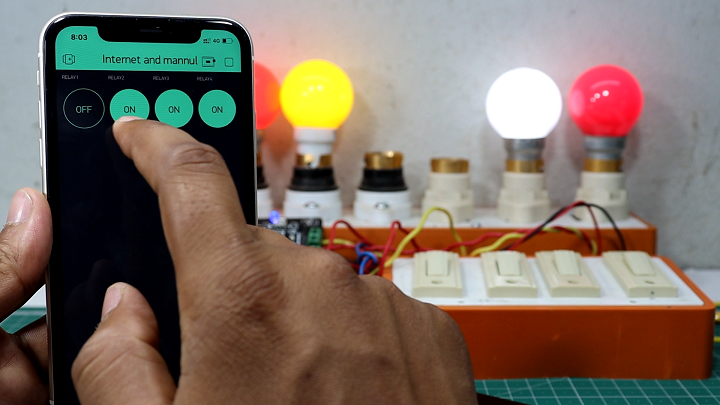
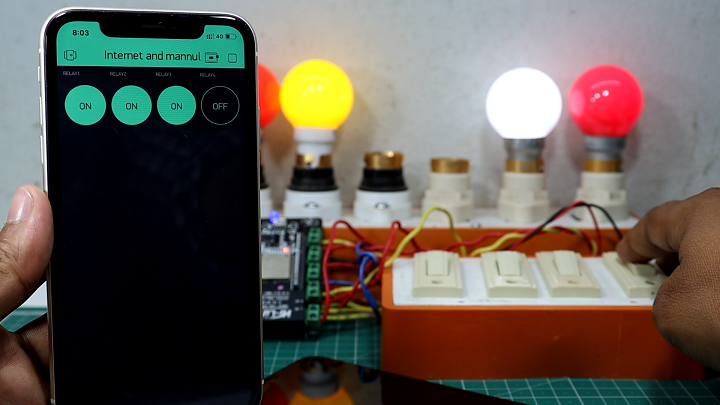
Now I am going to turn off the WIFI and show you how it will work without the internet,.
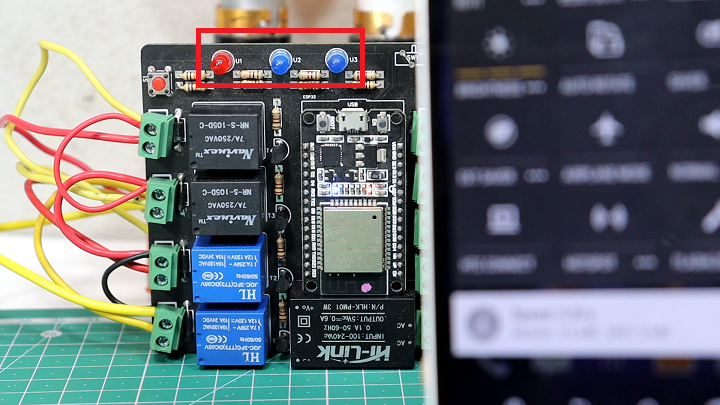
Here you can see the leds were automatically turned off.,
Now we can able to control it with the bluetooth using an app and also from manaul switches.
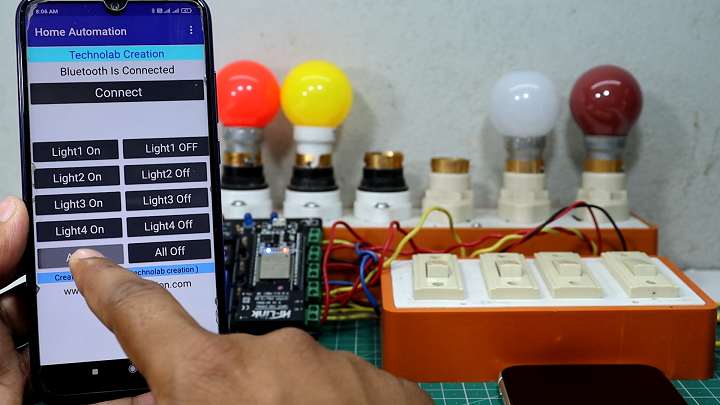
Components Requried.
Designing the PCB
To design the circuit and PCB, we used EasyEDA which is a cloud based software to design PCBs.

Designing the circuit works like in any other circuit software tool, you place some components and you wire them together. Then, you assign each component to a footprint.
Having the parts assigned, place each component. When you’re happy with the layout, make all the connections and route your PCB.


Save your project and export the Gerber files.
Seeed Fusion PCB Assembly.

Seeed Studio Fusion PCB Assembly Service takes care of the entire fabrication process from PCB manufacturing , parts sourcing, assembly and testing services, so you can be sure that they are getting a quality product. After gauging market interest and verifying a working prototype, Seeed Propagate Service can help you bring the product to market with professional guidance and a strong network of connections.

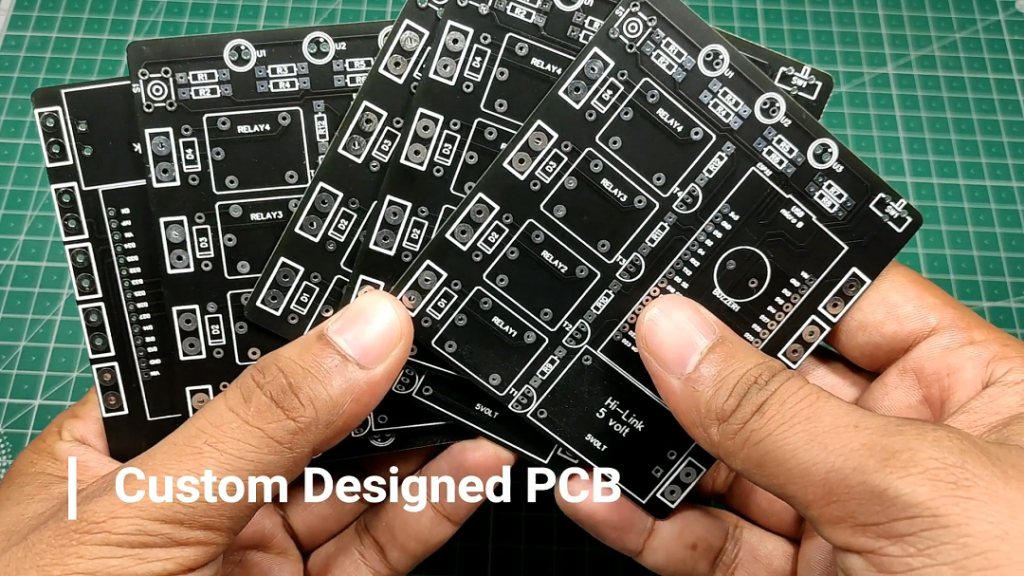
Connection of bulb and switches.
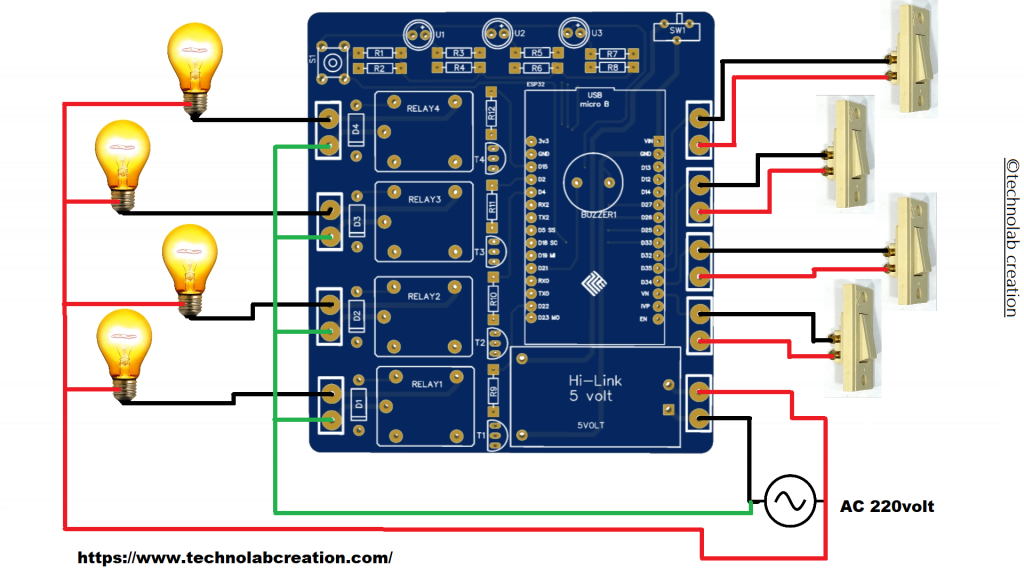
Connect all the bulb and switches according to circuit diagram shown above.
Blynk Application.
Bluetooth Application.

CODE
#include <BlynkSimpleEsp32.h>
#include "BluetoothSerial.h"
#include <AceButton.h>
using namespace ace_button;
#if !defined(CONFIG_BT_ENABLED) || !defined(CONFIG_BLUEDROID_ENABLED)
#error Bluetooth is not enabled! Please run
`make menuconfig` to and enable it
#endif
BluetoothSerial SerialBT;
BlynkTimer timer;
// define the GPIO connected with Relays and switches
#define RelayPin1 15 //D23
#define RelayPin2 2 //D22
#define RelayPin3 4 //D21
#define RelayPin4 22 //D19
#define SwitchPin1 32 //D13
#define SwitchPin2 35 //D12
#define SwitchPin3 34 //D14
#define SwitchPin4 39 //D27
#define wifiLed1 25
#define wifiLed2 26
#define wifiLed3 27
#define VPIN_BUTTON_1 V1
#define VPIN_BUTTON_2 V2
#define VPIN_BUTTON_3 V3
#define VPIN_BUTTON_4 V4
int toggleState_1 = 1; //Define integer to remember the toggle state for relay 1
int toggleState_2 = 1; //Define integer to remember the toggle state for relay 2
int toggleState_3 = 1; //Define integer to remember the toggle state for relay 3
int toggleState_4 = 1; //Define integer to remember the toggle state for relay 4
int wifiFlag = 0;
char bt_data; // variable for storing bluetooth data
ButtonConfig config1;
AceButton button1(&config1);
ButtonConfig config2;
AceButton button2(&config2);
ButtonConfig config3;
AceButton button3(&config3);
ButtonConfig config4;
AceButton button4(&config4);
void handleEvent1(AceButton*, uint8_t, uint8_t);
void handleEvent2(AceButton*, uint8_t, uint8_t);
void handleEvent3(AceButton*, uint8_t, uint8_t);
void handleEvent4(AceButton*, uint8_t, uint8_t);
#define WIFI_SSID "XXXXXXXXXXXXXXXXX" //Enter Wifi Name
#define WIFI_PASS "XXXXXXXXXXXXX" //Enter wifi Password
#define AUTH "XXXXXXXXXXXXXXXXXXXXXXX" // You should get Auth Token in the Blynk App.
BLYNK_WRITE(VPIN_BUTTON_1) {
toggleState_1 = param.asInt();
digitalWrite(RelayPin1, toggleState_1);
}
BLYNK_WRITE(VPIN_BUTTON_2) {
toggleState_2 = param.asInt();
digitalWrite(RelayPin2, toggleState_2);
}
BLYNK_WRITE(VPIN_BUTTON_3) {
toggleState_3 = param.asInt();
digitalWrite(RelayPin3, toggleState_3);
}
BLYNK_WRITE(VPIN_BUTTON_4) {
toggleState_4 = param.asInt();
digitalWrite(RelayPin4, toggleState_4);
}
BLYNK_CONNECTED() {
// Request the latest state from the server
Blynk.syncVirtual(VPIN_BUTTON_1);
Blynk.syncVirtual(VPIN_BUTTON_2);
Blynk.syncVirtual(VPIN_BUTTON_3);
Blynk.syncVirtual(VPIN_BUTTON_4);
}
void all_Switch_ON(){
digitalWrite(RelayPin1, LOW); toggleState_1 = 0; delay(100);
digitalWrite(RelayPin2, LOW); toggleState_2 = 0; delay(100);
digitalWrite(RelayPin3, LOW); toggleState_3 = 0; delay(100);
digitalWrite(RelayPin4, LOW); toggleState_4 = 0; delay(100);
}
void all_Switch_OFF(){
digitalWrite(RelayPin1, HIGH); toggleState_1 = 1; delay(100);
digitalWrite(RelayPin2, HIGH); toggleState_2 = 1; delay(100);
digitalWrite(RelayPin3, HIGH); toggleState_3 = 1; delay(100);
digitalWrite(RelayPin4, HIGH); toggleState_4 = 1; delay(100);
}
void Bluetooth_handle()
{
bt_data = SerialBT.read();
// Serial.println(bt_data);
delay(20);
switch(bt_data)
{
case 'w': digitalWrite(RelayPin1, LOW); toggleState_1 = 0; break; // if 'A' received Turn on Relay1
case 'W': digitalWrite(RelayPin1, HIGH); toggleState_1 = 1; break; // if 'a' received Turn off Relay1
case 'x': digitalWrite(RelayPin2, LOW); toggleState_2 = 0; break; // if 'B' received Turn on Relay2
case 'X': digitalWrite(RelayPin2, HIGH); toggleState_2 = 1; break; // if 'b' received Turn off Relay2
case 'y': digitalWrite(RelayPin3, LOW); toggleState_3 = 0; break; // if 'C' received Turn on Relay3
case 'Y': digitalWrite(RelayPin3, HIGH); toggleState_3 = 1; break; // if 'c' received Turn off Relay3
case 'z': digitalWrite(RelayPin4, LOW); toggleState_4 = 0; break; // if 'D' received Turn on Relay4
case 'Z': digitalWrite(RelayPin4, HIGH); toggleState_4 = 1; break; // if 'd' received Turn off Relay4
case 'a': all_Switch_ON(); break; // if 'Z' received Turn on all Relays
case 'A': all_Switch_OFF(); break; // if 'z' received Turn off all Relays
default : break;
}
}
void checkBlynkStatus() { // called every 3 seconds by SimpleTimer
bool isconnected = Blynk.connected();
if (isconnected == false) {
wifiFlag = 1;
digitalWrite(wifiLed1, LOW);
digitalWrite(wifiLed2, LOW);
digitalWrite(wifiLed3, LOW);//Turn off WiFi LED
}
if (isconnected == true) {
wifiFlag = 0;
digitalWrite(wifiLed1, HIGH);
digitalWrite(wifiLed2, HIGH);
digitalWrite(wifiLed3, HIGH);//Turn on WiFi LED
}
}
void setup()
{
Serial.begin(9600);
btStart(); //Serial.println("Bluetooth On");
SerialBT.begin("HA_BT_ESP32"); //Bluetooth device name
Serial.println("The device started, now you can pair it with bluetooth!");
delay(5000);
pinMode(RelayPin1, OUTPUT);
pinMode(RelayPin2, OUTPUT);
pinMode(RelayPin3, OUTPUT);
pinMode(RelayPin4, OUTPUT);
pinMode(wifiLed1, OUTPUT);
pinMode(wifiLed2, OUTPUT);
pinMode(wifiLed3, OUTPUT);
pinMode(SwitchPin1, INPUT_PULLUP);
pinMode(SwitchPin2, INPUT_PULLUP);
pinMode(SwitchPin3, INPUT_PULLUP);
pinMode(SwitchPin4, INPUT_PULLUP);
//During Starting all Relays should TURN OFF
digitalWrite(RelayPin1, toggleState_1);
digitalWrite(RelayPin2, toggleState_2);
digitalWrite(RelayPin3, toggleState_3);
digitalWrite(RelayPin4, toggleState_4);
config1.setEventHandler(button1Handler);
config2.setEventHandler(button2Handler);
config3.setEventHandler(button3Handler);
config4.setEventHandler(button4Handler);
button1.init(SwitchPin1);
button2.init(SwitchPin2);
button3.init(SwitchPin3);
button4.init(SwitchPin4);
WiFi.begin(WIFI_SSID, WIFI_PASS);
timer.setInterval(3000L, checkBlynkStatus); // check if Blynk server is connected every 3 seconds
Blynk.config(AUTH);
delay(2000);
}
void loop()
{
if (WiFi.status() != WL_CONNECTED)
{
// Serial.println("WiFi Not Connected");
}
else
{
//Serial.println("WiFi Connected");
Blynk.run();
}
timer.run(); // Initiates SimpleTimer
if (wifiFlag == 0){
}
else{
if (SerialBT.available()){
Bluetooth_handle();
}
}
button1.check();
button2.check();
button3.check();
button4.check();
}
void button1Handler(AceButton* button, uint8_t eventType, uint8_t buttonState) {
Serial.println("EVENT1");
switch (eventType) {
case AceButton::kEventPressed:
Serial.println("kEventPressed");
toggleState_1 = 0;
digitalWrite(RelayPin1, LOW);
Blynk.virtualWrite(VPIN_BUTTON_1, toggleState_1); // Update Button Widget
break;
case AceButton::kEventReleased:
Serial.println("kEventReleased");
toggleState_1 = 1;
digitalWrite(RelayPin1, HIGH);
Blynk.virtualWrite(VPIN_BUTTON_1, toggleState_1); // Update Button Widget
break;
}
}
void button2Handler(AceButton* button, uint8_t eventType, uint8_t buttonState) {
Serial.println("EVENT2");
switch (eventType) {
case AceButton::kEventPressed:
Serial.println("kEventPressed");
toggleState_2 = 0;
digitalWrite(RelayPin2, LOW);
Blynk.virtualWrite(VPIN_BUTTON_2, toggleState_2); // Update Button Widget
break;
case AceButton::kEventReleased:
Serial.println("kEventReleased");
toggleState_2 = 1;
digitalWrite(RelayPin2, HIGH);
Blynk.virtualWrite(VPIN_BUTTON_2, toggleState_2); // Update Button Widget
break;
}
}
void button3Handler(AceButton* button, uint8_t eventType, uint8_t buttonState) {
Serial.println("EVENT3");
switch (eventType) {
case AceButton::kEventPressed:
Serial.println("kEventPressed");
toggleState_3 = 0;
digitalWrite(RelayPin3, LOW);
Blynk.virtualWrite(VPIN_BUTTON_3, toggleState_3); // Update Button Widget
break;
case AceButton::kEventReleased:
Serial.println("kEventReleased");
toggleState_3 = 1;
digitalWrite(RelayPin3, HIGH);
Blynk.virtualWrite(VPIN_BUTTON_3, toggleState_3); // Update Button Widget
break;
}
}
void button4Handler(AceButton* button, uint8_t eventType, uint8_t buttonState) {
Serial.println("EVENT4");
switch (eventType) {
case AceButton::kEventPressed:
Serial.println("kEventPressed");
toggleState_4 = 0;
digitalWrite(RelayPin4, LOW);
Blynk.virtualWrite(VPIN_BUTTON_4, toggleState_4); // Update Button Widget
break;
case AceButton::kEventReleased:
Serial.println("kEventReleased");
toggleState_4 = 1;
digitalWrite(RelayPin4, HIGH);
Blynk.virtualWrite(VPIN_BUTTON_4, toggleState_4); // Update Button Widget
break;
}
} 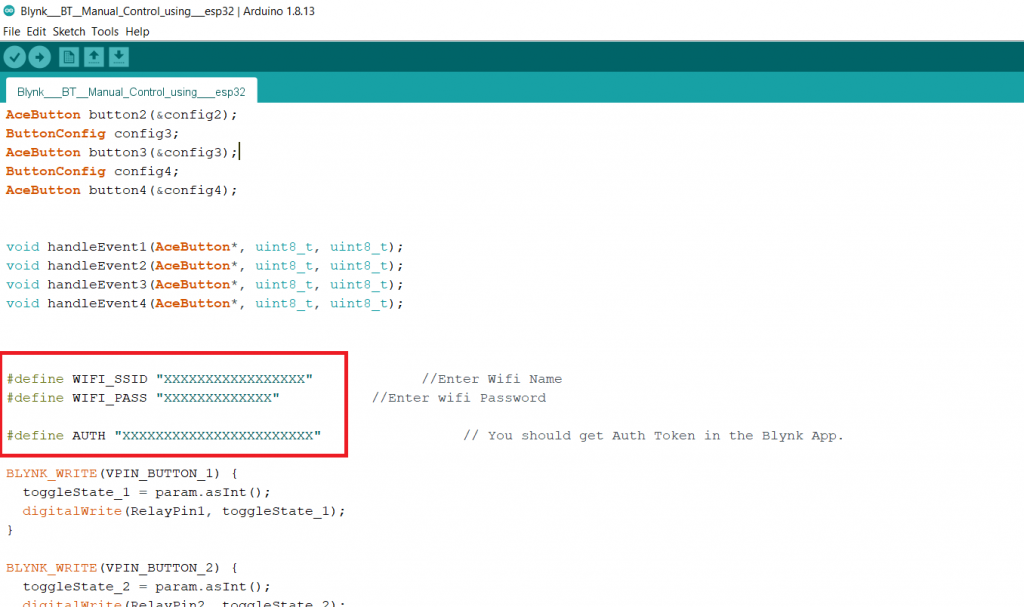
Enter the SSID and passward of your WIFI and also enter the authentication code of blynk that has to be sent in your registered email id.
